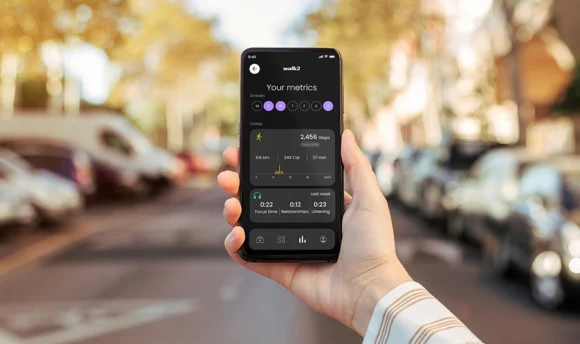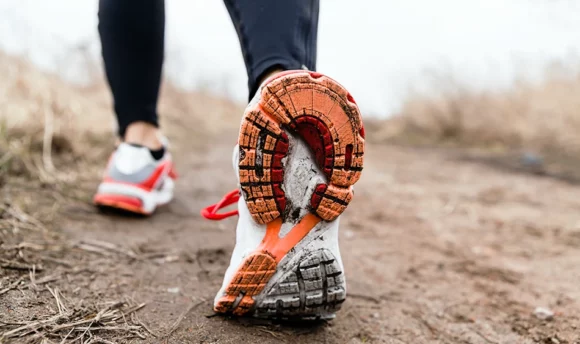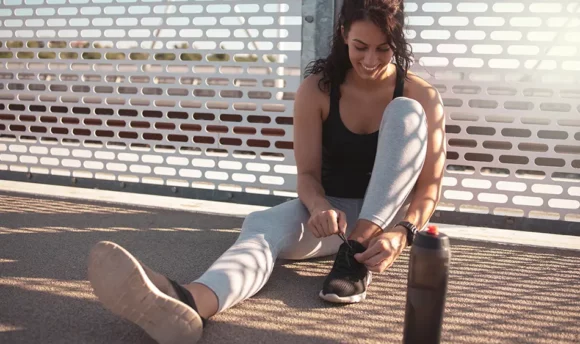10K Race Strategy: 5 Tips on Pacing and Fueling
It is time to tackle the 10K race. For that, you need an increase in mile pace, endurance, and an onslaught of dietary requirements. So today, we look at some great tips to help you complete your 10K.

10K is an ideal running distance for many competitive runners. At 6.2 miles, the 10K boasts double the distance of the 5K but less than half that of a half-marathon. This makes it a trademark running distance for many runners out there.
Coupled with the fact that just about anybody can train for it without significantly affecting your day-to-day activities. Still, there are some tricks to getting the most done before race day.
Today’s article will analyze the best racing strategy for a 10K. What are the secrets to running faster? What should you eat?
What Is the Best 10K Race Strategy?
The best strategy is utilizing even or negative splits, which involves dividing your race into thirds.
For the first third, you will run slightly slower than your goal pace to have a good pool of energy at the later stages of the race. Once you have crossed the first two miles, you then switch to your goal pace. This will carry on until you are at the final third.
During the last mile, you want to run as fast as possible, running at a pace you can sustain over several minutes.
5 Tips for How to Increase and Keep a Pace in a 10K Race
Being able to run all the way to the finish line is not the only important thing when race day comes. Investing your effort, focus, and energy in your 10K training ensures you run faster to the finish line each time you race.
Employing poor race tactics throughout your 10K training will result in redundant results come race day. Therefore, it is important you learn the secrets to pacing strategy – how to increase and maintain the same pace throughout your 10K race.
On that account, we will go through 5 tips to help you increase your current pace while you go about your 10K race.
#1 Do not get too overexcited
The first thing you want to do is make sure you have a complete understanding of the task ahead of you, what it will take to cross the finish line, and the process involved in getting there, and this applies to elite runners as much as it does to beginners.
On that account, trainers always advise their athletes to tone down on their excitement, given that the 10K seems like an easy target. That is because having no control of your emotions can lead to mental sabotage in more ways than one.
One common way overexcitement prior to your race may negatively affect your race strategy is fatigue.
#2 Try to find the right pace
Part of increasing your goal race pace is finding your sweet spot and maintaining the same pace for extended periods. Miscalculating your race pace, especially during the first few kilometers, will prove detrimental to the success of your 10K race.
A lot of runners who lack the experience tend to exert maximum effort and run faster than they can afford to sustain. However, the reality is far more unforgiving than anticipated, given that faster running equates to performance stagnation, fatigue, and mental burnout, setting in much quicker.
But then again, running slow is never the answer since running at a slower pace can leave you with heavy legs at the latter part of your race.
You need to be certain about what your 10K pace is and stick to your pacing strategy until you get to the end of the race.
On that note, you should build your workout regimen around speed workouts and their unique ability. Fartleks, tempo runs, and other speed work variations are great for improving your aerobic and anaerobic capacity.
These speed workouts help runners build on their current pace, allowing them to run faster for more extended periods. Even being able to increase your current race pace slightly will translate positively to your 10K pace.
On that note, employing the Joggo app will help you train effectively and improve your endurance. Joggo’s app is a functional training tool that helps runners of different abilities reach their training goals, including weight loss, mental relief, and reaching a target distance or goal pace.
The app features personalized training plans (diverse workouts for different race goals), meal preparation, and educational tidbits for runners. To take things further, the app provides biweekly training adjustments to cater to lapses in training.
Joggo also incorporated a reward system that helps keep their runners motivated to achieve their goals. Furthermore, you get access to experts ready to answer any running-related question.

- Personalized running plans created by professional coaches
- Meal plans perfectly tailored to your current diet, allergies, and health needs
- Treadmill mode for people preferring indoor running
- Educational articles on easier running, injury prevention, nutrition, and more
- Behavior science-based reward system for lasting motivation
#3 Do not try to overrace others
As much as your 10K race boasts several experienced runners, it is a bit counter-intuitive to let the competition set the tone for your race.
If you run too hard because you are worried about your competitors pacing you, you risk overexerting yourself and getting burned out after the first mile. That is because you cannot keep track of your goal pace, which throws your racing strategy into the mud.
Instead, you need to stay relaxed and go about your race doing even or negative splits. By even or negative splits, we mean running the race’s second half faster than the first.
Approaching the race using this strategy allows runners to use their energy economically, allowing them to run at a steady pace and ultimately increasing their chances of finishing the race.
#4 Do not underestimate the distance
It is undoubtedly true that many distance runners tend to regard the 10K race as one of the minor races compared to the half-marathon and marathon races. However, running 6.2 miles is no easy task whatsoever.
Furthermore, there is a significant difference between running a 10K and a regular 6-mile run, which is why experienced runners respect the distance regardless of their innate abilities.
While both races leave you physically uncomfortable, the perceived effort that goes into competing in a 10K is more than your weekly mileage runs; the metallic taste, burning lungs, and screaming lower body during the second half of the race are testament to how taxing it is.
For that reason, it would be in your best interest to go over everything that could potentially cost you the race. Not only should you prepare your body by combining your 10K training with strength training, but you should also mentally prepare yourself since a lack of mental focus could lead to hitting the wall during the race’s final stretch.
#5 Monitor your heart rate during a run
Monitoring your heart rate while running is an excellent strategy for measuring how hard you are working yourself. Regardless, runners should stick to the anaerobic threshold effort, running between 80–95% of their maximum heart rate.
Your pacing and work rate increase with your heart rate simultaneously; thus, you will be able to alter your racing strategy mid-race with this information. You can use a chest or watch-style heart monitor to get this information.
Fueling in a 10K Race
Another aspect that plays a huge role on race day is what fuel you are giving your body. It is, in fact, one of the more prevalent questions among new runners preparing for their first 10K race.
Knowing the rules that govern diet and nutrition (what you should eat before, during, and after every race) is equally as important as the training that goes into race preparation.
We have prepared an extensive guide housing your food needs in the days leading to your 10K and the night before, during, and after your race.
What to eat before running a 10K
Your dietary needs up until the end of your race serve one purpose: to elevate your performance come race day. Unfortunately, less experienced runners are fond of hoarding the right food during the days leading their race and then falling victim to overeating, which could lead to gastrointestinal issues.
The fact remains that a healthy diet is a big part of your 10K training, and just like diversifying the types of runs in your regimen, mixing up the different food is key to meeting all your nutritional needs.
Protein
Your muscles rely heavily on protein to propel them through your run. As a result, it is important you fill up on lean protein every day in preparation for your run.
The best bet is to look for good protein sources with low calorie and good fat content. Excellent examples include Yoplait yogurt, skinless chicken, white fish, low-fat cottage cheese, and lean beef.
These food items are excellent for maintaining lean muscle mass, which is perfect for the speed-endurance requirements linked with 10K races.
Fruits and vegetables
There is no doubt how important fruits and vegetables are in any diet. They contain a plethora of vitamins and minerals, including vitamins A, B, C, and E, magnesium, phosphorus, zinc, and much more.
The National Health and Medical Research Council in Australia states that adults must include at least five kinds of vegetables and two kinds of fruits daily to get the best out of them.
There are several ways to go about this. However, a simpler strategy is to make sure each meal contains a portion of fruits and vegetables.
Unsaturated fats
Fats are increasingly vital to maintaining a healthy body; they care for the joints, eyes, skin, and hair while facilitating vitamin absorption. They also enhance the taste of certain foods and fill you up for longer periods.
Still, not all fats are good fats. Trans fats, commonly found in processed foods, are responsible for increased cholesterol levels and clogged arteries, and they plan no part in health improvements.
On the other hand, olives, coconut, avocado, cheese, butter, and fatty fish are excellent sources of saturated fats. Incorporating these into your diet will depend on your required daily calorie and fat intake.
Long-distance runners weighing 50–100kg need to consume 2,500–8,000 calories daily. On the other hand, these athletes need 20–35% of their daily caloric intake as fat, which amounts to consuming 0.5–1.5g/kg/day.
Carbohydrates
Carbohydrates still remain the primary energy source for runners. Therefore, long-distance runners should make it a habit of gradually loading up on carbs prior to race day to increase their glycogen stores instead of eating a bowl of spaghetti the night before the race.
Still, you are not free to consume all sorts of carbs before your race. The goal is to stick to high-quality carbohydrates such as sweet potatoes, brown rice, lentils, chickpeas, and quinoa.
The night before the 10K
The night before your race presents the last opportunity to prepare your body for optimal performance. Therefore, fueling your body with light and nutritious foods is important.
Carb-based meals such as oatmeal, potatoes, pasta, and brown rice should be your go-to carb option the evening before your race. Similarly, lean protein is an acceptable option for you. However, when it comes to fat consumption, our advice is that you limit your intake to avoid GI disturbances.
In terms of staying properly hydrated, water should be the only liquid coursing through your system.
It is in your best interest to stay away from alcohol since it will lead to dehydration and glycogen depletion. Research carried out, in line with the Institute of Medicine (IOM), suggests that on a daily basis, men and women should consume at least 13 cups (approx. 3 liters) and 9 cups (above 2 liters) of water, respectively.
Overall, improper hydration may result in hyponatremia, which could lead to weakness, dizziness, headache, lethargy, nausea, vomiting, heat exhaustion, and heat stroke.
The morning before the 10K
The rule of thumb is to eat a light breakfast at least 2 hours before your race. Your breakfast should stay centered on high glycemic carbohydrates; oatmeal with berries, whole-wheat toast with honey, Greek yogurt, and bananas are perfect examples.
You should also try to drink at least 500ml of fluids before the start of the race. Then, if you have successfully fueled your body until the start of the race, you should have enough energy to complete your 10K without complaint.
During the 10K
10K or 6.2 miles is not much of a long run distance for many runners. As such, there is no need to worry about what you need to eat during the race.
The one sure thing is to drink lots of water. That is because water helps regulate body temperature, energize cells, reduce muscle cramping, and reduce joint injury.
After the 10K
You might think you are free to indulge your cravings post-race; however, the reality is entirely different.
Take time out to replenish lost fluids and your muscles’ carbohydrate stores. Research states that runners need to drink at least 16 ounces of water with food after their runs. Furthermore, if your sweat rate is on the high side, you should up your water intake by drinking about 20–24oz.
FAQs
10K in miles is 6.2 miles.
A good 10K pace time is about 49 minutes. Still, elite runners can complete the 10K in less than 45 minutes.
The male world record for the fastest 10K run is 26 minutes and 11 seconds. The owner of this record is Joshua Cheptegei of Uganda. He set this record on October 7, 2020.
Likewise, the female world record for the fastest 10K run is 29 minutes and 1 second. The owner of this record is Letesenbet Gidey of Ethiopia. She set this record on June 8, 2021.
A Word From Our Coach
From the viewpoint of a professional, it is important to approach any long-distance race with a controlled effort.
The primary goal of the race is to cross the finish line. Therefore, whether you are running a half-marathon, 10K, or cross country, having total control of everything from your training to your diet is the best way to ensure optimal performance.
Your 10K training should revolve around speed and endurance workouts, as those are the basis of improving your goal pace and overall speed. Dynamic stretches, warm-up, and cool-down exercises are also important.
Furthermore, when going about your 10K training, try to schedule recovery intervals between sessions to give your body room to recover.
Conclusion
Completing a 10K is a huge achievement for anybody. Regardless of how short the distance may seem, the effort to prepare, run, and finish the race is substantial.
Regardless, having a good idea of what to do and putting them into practice is enough to see you accomplish your goals. Prioritize training and give yourself ample time to recover.
Overall, it is important you have fun with your race. Do not overstress yourself, as that could result in underperformance and injuries.

















































 Select your language:
Select your language: 








